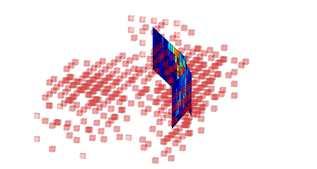Difference between revisions of "Seismology"
m |
m |
||
| (One intermediate revision by the same user not shown) | |||
| Line 2: | Line 2: | ||
|title=PRIMO.ai | |title=PRIMO.ai | ||
|titlemode=append | |titlemode=append | ||
| − | |keywords=artificial, intelligence, machine, learning, models | + | |keywords=ChatGPT, artificial, intelligence, machine, learning, GPT-4, GPT-5, NLP, NLG, NLC, NLU, models, data, singularity, moonshot, Sentience, AGI, Emergence, Moonshot, Explainable, TensorFlow, Google, Nvidia, Microsoft, Azure, Amazon, AWS, Hugging Face, OpenAI, Tensorflow, OpenAI, Google, Nvidia, Microsoft, Azure, Amazon, AWS, Meta, LLM, metaverse, assistants, agents, digital twin, IoT, Transhumanism, Immersive Reality, Generative AI, Conversational AI, Perplexity, Bing, You, Bard, Ernie, prompt Engineering LangChain, Video/Image, Vision, End-to-End Speech, Synthesize Speech, Speech Recognition, Stanford, MIT |description=Helpful resources for your journey with artificial intelligence; videos, articles, techniques, courses, profiles, and tools |
| − | |description=Helpful resources for your journey with artificial intelligence; videos, articles, techniques, courses, profiles, and tools | + | |
| + | <!-- Google tag (gtag.js) --> | ||
| + | <script async src="https://www.googletagmanager.com/gtag/js?id=G-4GCWLBVJ7T"></script> | ||
| + | <script> | ||
| + | window.dataLayer = window.dataLayer || []; | ||
| + | function gtag(){dataLayer.push(arguments);} | ||
| + | gtag('js', new Date()); | ||
| + | |||
| + | gtag('config', 'G-4GCWLBVJ7T'); | ||
| + | </script> | ||
}} | }} | ||
[http://www.youtube.com/results?search_query=Seismology+earthquake+artificial+intelligence+deep++machine+learning+ML Youtube search...] | [http://www.youtube.com/results?search_query=Seismology+earthquake+artificial+intelligence+deep++machine+learning+ML Youtube search...] | ||
| Line 11: | Line 20: | ||
* [[Case Studies]] | * [[Case Studies]] | ||
** [[Geology: Mining, Oil & Gas]] | ** [[Geology: Mining, Oil & Gas]] | ||
| − | ** [[Satellite Imagery]] | + | ** [[Satellite#Satellite Imagery|Satellite Imagery]] |
** [[Environmental Science]] | ** [[Environmental Science]] | ||
* [[Backtesting]] | * [[Backtesting]] | ||
| − | * [[Time# | + | * [[Time]] ... [[Time#Positioning, Navigation and Timing (PNT)|PNT]] ... [[Time#Global Positioning System (GPS)|GPS]] ... [[Causation vs. Correlation#Retrocausality| Retrocausality]] ... [[Quantum#Delayed Choice Quantum Eraser|Delayed Choice Quantum Eraser]] ... [[Quantum]] |
* [[Assessing Damage#Earthquake|Assessing earthquake damage]] | * [[Assessing Damage#Earthquake|Assessing earthquake damage]] | ||
* [http://earthquake.usgs.gov/earthquakes/eventpage/us20002926/executive#map Earthquake Hazards Program | USGS] | * [http://earthquake.usgs.gov/earthquakes/eventpage/us20002926/executive#map Earthquake Hazards Program | USGS] | ||
Latest revision as of 07:17, 10 July 2023
Youtube search... ...Google search ..Google News ... mapped
- Case Studies
- Backtesting
- Time ... PNT ... GPS ... Retrocausality ... Delayed Choice Quantum Eraser ... Quantum
- Assessing earthquake damage
- Earthquake Hazards Program | USGS
- Artificial Intelligence Takes On Earthquake Prediction | Ashley Smart - Quanta Magazine
- A Silent Build-up in Seismic Energy Precedes Slow Slip Failure in the Cascadia Subduction Zone | C. Hulbert, B. Rouet-Leduc, P. Johnson
- Forecasting earthquake aftershock locations with AI-assisted science | Phoebe DeVries
- Seismology | Wikipedia
- Earthquake Ground Motion Simulation Using Novel Machine Learning Tools | Arzhang Alimoradi
- Groundbreaking earthquake catalog may have just solved a seismic mystery | Jenny Howard - National Geographic
- A deep-learning algorithm could detect earthquakes by filtering out city noise | Rhiannon Williams - MIT Technology Review ... The model could uncover quakes that would previously have been dismissed as human-generated vibrations.

|
|
|
|
|
|
|
Earthquake Prediction
|
|
|
|
|
|
|
|
|
|
|
Kaggle: Earthquake Prediction Challenge
Forecasting earthquakes is one of the most important problems in Earth science because of their devastating consequences. Current scientific studies related to earthquake forecasting focus on three key points: when the event will occur, where it will occur, and how large it will be. In this competition, you will address when the earthquake will take place. Specifically, you’ll predict the time remaining before laboratory earthquakes occur from real-time seismic data. If this challenge is solved and the physics are ultimately shown to scale from the laboratory to the field, researchers will have the potential to improve earthquake hazard assessments that could save lives and billions of dollars in infrastructure. This challenge is hosted by Los Alamos National Laboratory which enhances national security by ensuring the safety of the U.S. nuclear stockpile, developing technologies to reduce threats from weapons of mass destruction, and solving problems related to energy, environment, infrastructure, health, and global security concerns.
|
|
|
|
Siraj Raval's
Data Science coding challenge time! The popular Data Science competition website Kaggle has an ongoing competition to solve the problem of earthquake prediction. Given a dataset of seismographic activity from a laboratory simulation, participants are asked to create a predictive model for earthquakes. In this video, I'll attempt the challenge as a way to teach 3 concepts; the Data Science mindset, Categorical Boosting, and Support Vector Regression (SVR) models. I'll be coding this using Python from start to finish in the online Google Colaboratory environment. The credits are from a mix of different Kaggle Kernels that I liked (lots), as well as my own code + explanations.This is the code for the Kaggle Earthquake Challenge videp | Siraj Raval on YouTube...
|